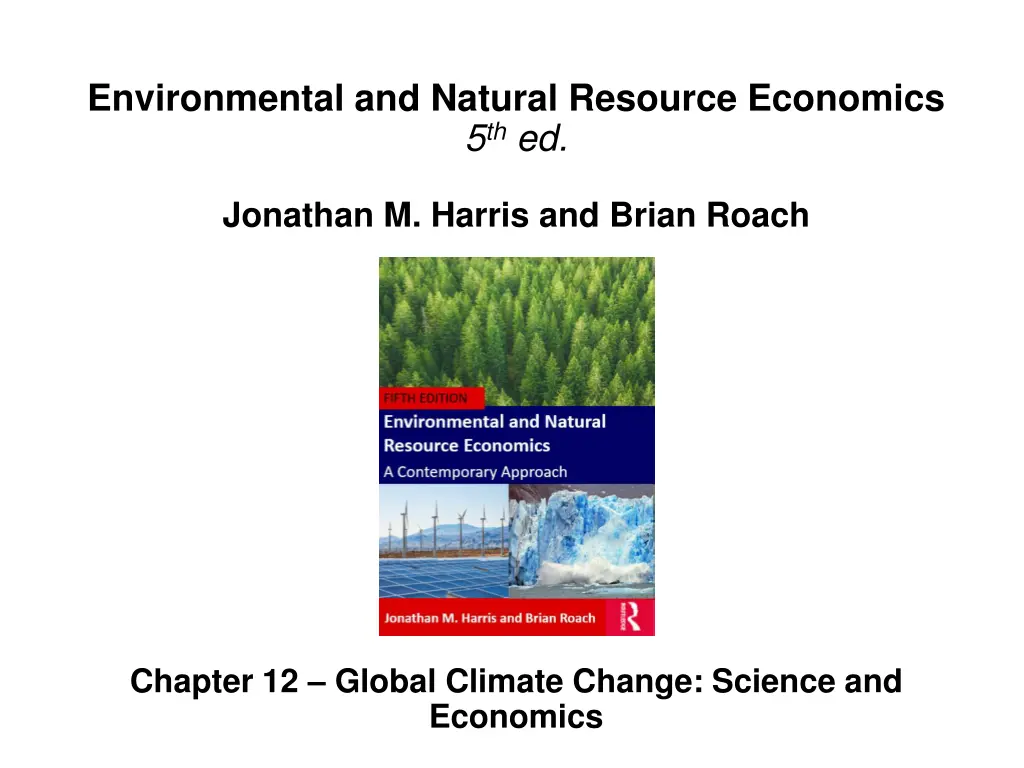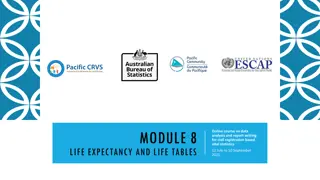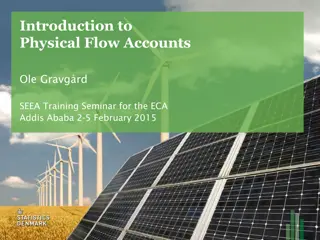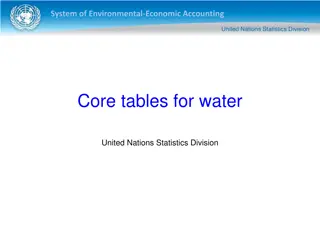
Global Climate Change: Science and Economics Insights
Explore the trends in atmospheric carbon dioxide levels, global carbon dioxide emissions, per-capita emissions, temperature anomalies, and sea-level rise from authoritative sources. Gain valuable insights into the environmental challenges we face.
Download Presentation

Please find below an Image/Link to download the presentation.
The content on the website is provided AS IS for your information and personal use only. It may not be sold, licensed, or shared on other websites without obtaining consent from the author. If you encounter any issues during the download, it is possible that the publisher has removed the file from their server.
You are allowed to download the files provided on this website for personal or commercial use, subject to the condition that they are used lawfully. All files are the property of their respective owners.
The content on the website is provided AS IS for your information and personal use only. It may not be sold, licensed, or shared on other websites without obtaining consent from the author.
E N D
Presentation Transcript
Environmental and Natural Resource Economics 5th ed. Jonathan M. Harris and Brian Roach Chapter 12 Global Climate Change: Science and Economics
Figure 12.1 Atmospheric Carbon Dioxide Levels 420 400 CO2 Concentration (ppm) 380 360 340 320 300 1962 1968 1974 1980 1986 1992 1998 2004 2010 2016 Source: National Oceanic and Atmospheric Administration, Earth System Research laboratory, Global Monitoring Division, http://www.esrl.noaa.gov/gmd/ccgg/trends/data.html. Note: ppm = parts per million. Seasonal variations mean that CO2 concentrations rise and fall each year with growth and decay of vegetation and other biological systems, but the long-term trend is a steady upward increase due to human emissions of CO2.
Figure 12.2 Global Carbon Dioxide Emissions from Fossil Fuel Consumption, 1900-2019 Source: Global Carbon Project, Global Carbon Budget 2020.
Figure 12.3 Carbon Dioxide Emissions, 19652019, Industrialized and Developing Countries Source: International Energy Agency, https://www.iea.org/articles/global-co2-emissions-in-2019
Figure 12.4 Percentage of Global CO2 Emissions by Country/Region Source: BP Statistical Review of World Energy, 2020.
Figure 12.5 Per-Capita Carbon Dioxide Emissions, by Country Source: European Commission EDGAR Database for Global Atmospheric Research, 2020 (data for 2017 emissions).
Figure 12.6 Global Annual Temperature Anomalies (C), 1850 2019 Source: NOAA Global Time Series, htps://www.ncdc.noaa.gov/global/time-series/globe/land_ocean/ytd/12/1880-2019 Note: The zero baseline represents the average global temperature for the twentieth century.
Figure 12.7 Sea-Level Rise, 18802018 Source: U.S. Global Change Research Program, https://www.globalchange.gov/browse/indicators/global-sea-level-rise. Note: The blue line up to 1993 represents data measured using tide gauges. The gray line afterward represents data from satellite measurements.
Figure 12.8 Projected Global Greenhouse Gas Emissions, 2020-2100 Source: Climate Action Tracker, https://climateactiontracker.org/global/temperatures/.
Table 12.1 Possible Effects of Climate Change Eventual Temperature Rise Relative to Pre-Industrial Temperatures Type of Impact 1 C 2 C 3 C 4 C 5 C Freshwater Supplies Small glaciers in the Andes disappear, threatening water supplies for 50 million people Modest increase in yields in temperate regions Potential water supply decrease of 20 30% in some regions (Southern Africa and Mediterranean) Declines in crop yields in tropical regions (5 10% in Africa) Serious droughts in southern Europe every 10 years; 1 4 billion more people suffer water shortages 150 550 million more people at risk of hunger; yields likely to peak at higher latitudes 1 3 million more potentially people die annually from malnutrition Potential water supply decrease of 30 50% in southern Africa and Mediterranean Large glaciers in Himalayas possibly disappear, affecting of China s population Food and Agriculture Yields decline by 15 35% in Africa; some entire regions out of agricultural production Up to 80 million more people exposed to malaria in Africa Increase in ocean acidity, possibly reduces fish stocks Human Health At least 300,000 die each year from climate related diseases; reduction in winter mortality in high latitudes Increased damage from coastal flooding 40 60 million more exposed to malaria in Africa Further disease increase and substantial burdens on health care services Coastal Areas Up to 10 million more people exposed to coastal flooding Up to 170 million more people exposed to coastal flooding Up to 300 million more people exposed to coastal flooding Sea-level rise threatens major cities such as New York, Tokyo, and London Significant extinctions across the globe Ecosystems At least 10% of land species facing extinction; increased wildfire risk 15 40% of species potentially face extinction 20 50% of species potentially face extinction; possible onset of collapse of Amazon forest Loss of half of Arctic tundra; widespread loss of coral reefs Source: IPCC, 2007b; Stern, 2007.
Figure 12.9 Increasing Damages from Rising Global Temperatures Source: Revesz et al., 2014, http://www.nature.com/news/global-warming-improve-economic-models-of-climate-change-1.14991; Ackerman, Stanton, and Bueno, 2013. Note: The three different models (ENVISAGE, DICE, and CRED) shown in this figure give damage estimates that are similar at low to moderate levels of temperature change, but diverge at higher levels, reflecting different assumptions used in modeling.
Table 12.2 Regional-Scale Impacts of Climate Change by 2080 (Millions of People) Additional population at risk Population living in Increase in average annual of hunger (figures in Region watersheds with an increase number of coastal flood parentheses assume in water-resources stress victims maximum CO2 enrichment effect) Europe 382 493 0.3 0 Asia 892 1197 14.7 266 ( 21) North America 110 145 0.1 0 South America 430 469 0.4 85 ( 4) Africa 691 909 12.8 200 ( 2) Source: Adapted from IPCC, 2007b. Note: These estimates are based on a business-as-usual scenario (IPCC A2 scenario). The CO2 enrichment effect is increased plant productivity, which at maximum estimates could actually decrease the number at risk of hunger.






















